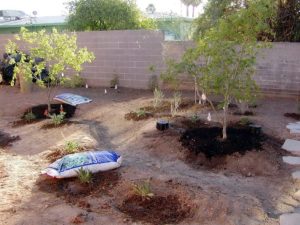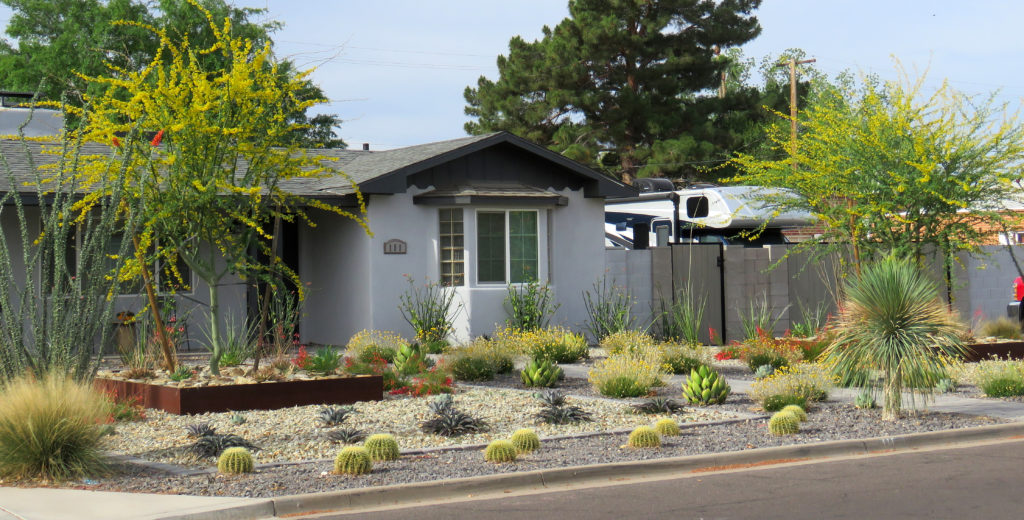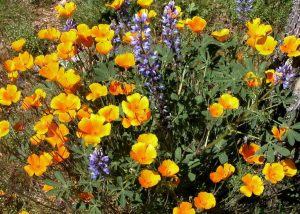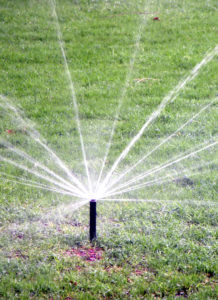Donna DiFrancesco is a Conservation Coordinator with the City of Mesa, AZ, one of 19 Water– Use It Wisely partners to offer water-saving advice and programs.
The fall planting season is here! Temperatures are cooling down, making it a perfect time to replace your plants you may have lost during the record-hot summer, or replace your high-water-usage plants with water-thrifty ones. Find our favorite Water – Use It Wisely resources below:

Water – Plant It Wisely: Our Ultimate Fall Planting Resource
Put your gardening gloves and shovel to work and get your landscaping on par with the rest of Mother Nature. Water – Plant It Wisely is your handy resource to provide landscaping guidance, advice, and ideas on what to plant. Because what you plant affects more than your yard. It helps create a more sustainable future, and by selecting low-water-use plants, you help conserve our precious water supply for generations to come. Bet you didn’t know your little ol’ garden could do all that. Learn more at our special microsite that puts everything in one easy place – WaterPlantItWisely.com.
Why Plant in the Fall?
Glad you asked! It’s the prime time to plant trees, shrubs, and spring wildflowers in southern Arizona. From late September through early December, soil temperatures are still warm, encouraging root growth and development. Planting now allows plants to become established before next summer’s heat sets in. Also, with cooler temperatures, plants need less water and it is a much more forgiving time of year to put new plants in the ground. If you forget to water just one day in the summer, your new plants can be toast. From the fall season through spring, water newly planted plants once every 3-4 days and gradually increase the number of days between watering as plants get established. Wondering how to plant? How deep to dig the hole? How to use mulch? Be sure to visit our Water – Plant It Wisely site for plant selection tips and proper planting instructions.
Always Plan Before You Plant

Planning is essential if you want an attractive, easy-to-maintain, and functional home landscape. Make sure to look at mature plant size and characteristics to determine if their fit and function will work well in your yard.
Water – Use It Wisely Arizona partners have put together great information on saving water outdoors that includes interactive watering guides, landscaping ideas, low-water-use plants, and more. Also, be sure to explore the event calendar on the Water – Use It Wisely home page and find out about the fall landscape workshops we have going on this season!
When you purchase plants for your home landscape, be sure to look for healthy, well-grown plants. Don’t forget to add 2-3 inches of compost or mulch to the surface of the soil after planting and before covering it with granite or rock (keep the mulch a few inches away from the stem or tree trunk). Check with your local plant nursery for the best results. Don’t forget to look for local fall plant sales put on by botanical gardens or others. We’ve included a listing of dates and locations on the microsite.
What are the Benefits of Low-Water-Use Plants?
This fall, replace your high-water-use plants with water-thrifty ones! Desert flora doesn’t require much water to thrive and adds a variety of colors, sizes, and functions that will spruce up your garden. You will love how your yard looks, how much easier it is to maintain, and how your water bills look. With each low-water-use plant you place in your landscape, you can save up to 550 gallons a year. Considering up to 70% of water use is outdoors, you can brag to your neighbors that your beautiful landscape is not only conserving water but is easy to take care of, too.

Benefits of Low-Water-Use Landscapes
- Use up to 60-75% less water than grass or traditional landscapes
- Save water, a precious resource in the desert
- Provide many functions (shade, attracting birds, add color)
- Easier to maintain requiring less fertilizer, pesticides, and care
Don’t Forget to Plant Seeds
Consider Forgoing the Winter Grass
Are you thinking of overseeding your bermudagrass? While sustaining a lush, green lawn throughout the year is appealing to many home and business owners, the additional water needed for cool-season grasses is difficult to justify when water is such a precious resource. Now more than ever, saving every drop we can is critical as we experience extraordinary drought conditions as well as climate pressures that have triggered water shortages to our Colorado River water supplies.
Need more help to decide whether or not to forgo the winter lawn? First, see the Top Ten Reasons Not to Overseed with Winter Rye. If you decide you still want to overseed, keep it as efficient as you can with the timing, watering, and limiting the areas.

Plant Wildflowers
Are you looking for carpets of golden poppies or spikes of violet lupines? Even though they bloom in the spring, fall is the time to sow many of the wildflower seeds in your landscape. If possible try to sow shortly before one of our October or November rains. For good details on wildflower gardening, request our free booklet, “Landscape Plants for the Arizona Desert,” or read our blog, “Plant of the Month: Wildflowers!” for more information.
Avoid wildflower or ‘meadow’ mixes from other parts of the country or world. For example, African Daisies are… well, from Africa. Look for quality, locally grown, or collected seed that includes beauties such as Mexican Gold Poppies, Arizona Lupines and Desert Bluebells. The Native Seed Company out of Tucson provides high-quality, locally collected native seeds. Seeds are not available for online ordering but can be found at most local nurseries or specialty plant sales. However, you can also order them through Native Seeds/SEARCH online.



